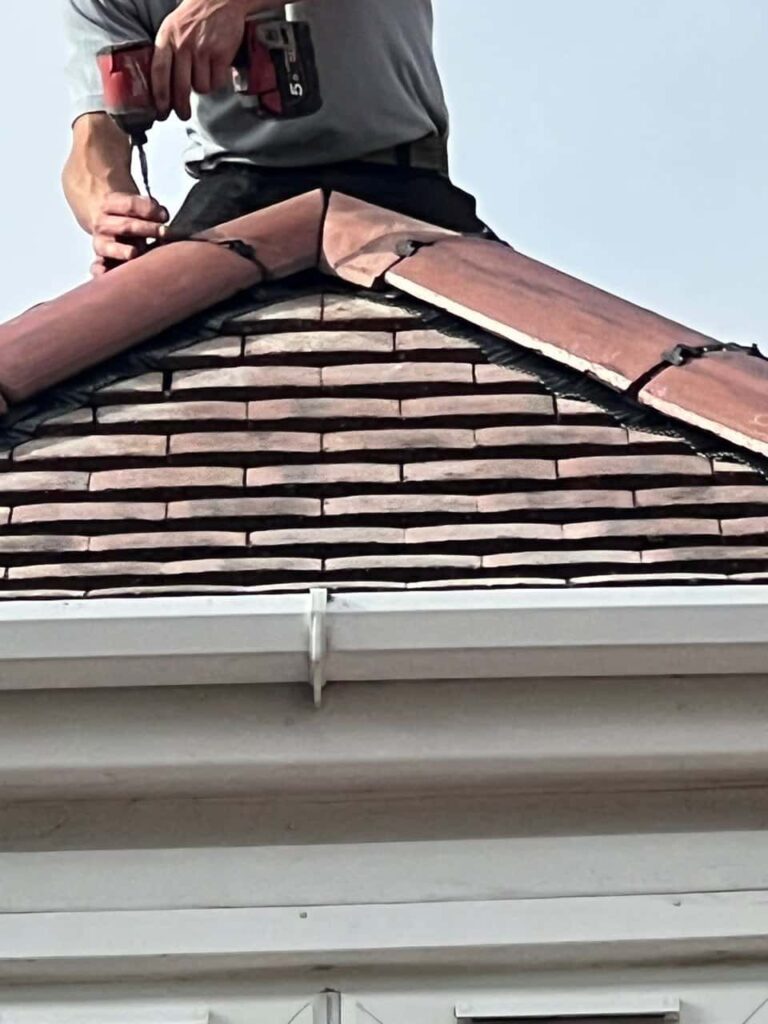Introduction
Lead flashing is a crucial component of any roofing system, preventing water from penetrating vulnerable areas such as chimneys, valleys, and joints. Over time, flashing can deteriorate due to weather exposure, corrosion, or poor installation, leading to leaks and structural damage. Identifying when lead flashing needs replacing is essential to maintaining a watertight roof and avoiding costly repairs.
At Wingerworth Roofing Repairs, we specialise in lead flashing repairs and replacements in Wingerworth, Nottinghamshire, ensuring that homes remain protected from water damage. This guide explains the signs of failing lead flashing, the risks of neglect, and the benefits of timely replacement.
Key Takeaways
- Lead flashing seals joints and prevents water infiltration in vulnerable areas.
- Signs of failure include cracks, lifting, corrosion, and visible water leaks.
- Damaged flashing can lead to internal damp, mould, and structural decay.
- Regular inspections help identify issues early and prevent costly repairs.
- Professional replacement ensures long-term durability and weather resistance.
What Is Lead Flashing?
Lead flashing is a strip of lead material used to create a waterproof seal between different roofing components. It is commonly installed around chimneys, roof valleys, dormer windows, and junctions where roof slopes meet walls. Due to its flexibility and durability, lead has been used in roofing for centuries, but even the strongest materials can degrade over time.
Signs That Lead Flashing Needs Replacing
1. Visible Cracks or Splits
Extreme temperature changes can cause lead flashing to expand and contract, leading to cracks or splits. Once the material weakens, water can seep through these openings, resulting in roof leaks.
- Inspect flashing for small fractures or gaps along the edges.
- Cracked flashing near chimneys or vents often indicates long-term weather damage.
2. Lifting or Loose Flashing
Flashing should sit flush against the roof and surrounding surfaces. If it begins to lift, water can easily find its way underneath, leading to dampness and decay.
- High winds and storms can loosen flashing from its fixings.
- Poorly installed flashing may lift over time due to insufficient securing methods.
3. Corrosion and Discolouration
While lead flashing is highly durable, prolonged exposure to moisture and pollutants can cause it to corrode. Signs of corrosion include:
- White or powdery residue forming on the surface.
- Green or black streaks indicating oxidation or algae buildup.
- Metal that appears thin or brittle due to long-term wear.
4. Water Stains Inside the Property
If water leaks through compromised flashing, it may leave tell-tale signs inside the home. Check for:
- Damp patches on ceilings and walls, particularly near chimneys or roof junctions.
- Peeling wallpaper or mould growth, which indicates ongoing moisture issues.
- Dripping water during heavy rain, a clear sign of an urgent repair need.
5. Moss or Mould Growth Around Flashing
Excessive moss or mould on or near flashing suggests persistent moisture retention. Over time, this can weaken the surrounding roof materials and cause additional damage.
- Moss buildup in roof valleys can indicate poor drainage and water pooling.
- Mould growth around flashing joints may signal hidden leaks beneath the roof surface.
6. Increased Energy Bills
Damaged flashing can lead to insulation issues, allowing heat to escape from the roof. If heating costs suddenly rise, it may be worth inspecting the roof for potential weak points.
Risks of Ignoring Damaged Flashing
Failing to replace worn-out lead flashing can lead to severe structural problems, including:
- Water ingress, causing timber beams and roof structures to rot.
- Mould and mildew, which can lead to health issues and costly remediation.
- Collapsed ceilings or plaster damage from prolonged leaks.
- Compromised insulation, making the home less energy efficient.
When to Replace vs. Repair Flashing
Minor damage, such as small cracks or slight lifting, may be repairable with sealants or patching. However, extensive corrosion, multiple cracks, or significant water damage typically require full replacement to prevent ongoing issues.
A professional roofing contractor can assess the extent of the damage and recommend the best course of action.
Professional Lead Flashing Replacement
Replacing lead flashing involves:
- Carefully removing old flashing without damaging surrounding tiles or slates.
- Cutting and shaping new lead sheets to fit the specific roof area.
- Securing the flashing with lead fixings or mortar to create a watertight seal.
- Applying protective coatings to extend the lifespan of the lead.
At Wingerworth Roofing Repairs, we provide expert lead flashing replacement in Wingerworth, Nottinghamshire, ensuring long-lasting protection against water ingress.
Conclusion
Lead flashing is essential for maintaining a watertight roof, but over time, it can degrade due to weather exposure, structural movement, or poor installation. Recognising signs such as cracks, corrosion, lifting edges, and water stains can help homeowners address issues before they lead to more serious damage. Regular inspections and timely replacement ensure that the roof remains durable and weather-resistant.
At Wingerworth Roofing Repairs, we specialise in lead flashing repairs and replacements in Wingerworth, Nottinghamshire. Contact us today for expert advice and professional roofing services to protect your home from water damage.
Call us on: 01246 956 395
Click here to find out more about Wingerworth Roofing Repairs
Click here to complete our contact form and see how we can help with your Roofing needs.

